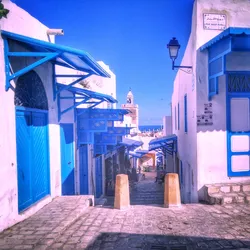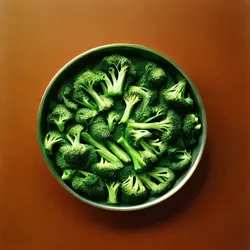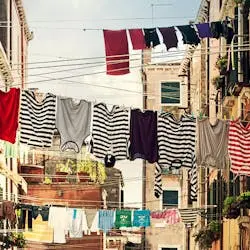
Level 1:
Shibori is a festival in Japan. People love Shibori. Shibori has a lot of colors. It has purple and blue. These are very nice colors. Shibori started long ago. It was very different back then. People did not have the same things as now. They still made Shibori. Shibori is important to them. People from all over the world come to see Shibori. Shibori is fun for everyone.
Level 2:
Shibori is a colorful festival in Japan that has been celebrated for centuries. The tradition involves dyeing fabric using a unique technique that produces beautiful shades of blue and purple. The festival honors the cultural heritage of Shibori, and it’s considered an important event for the locals. People from all over the world come to experience the vibrant atmosphere of Shibori and learn about traditional Japanese arts and crafts. The festival is an opportunity to celebrate the town’s past while also looking towards the future. Visitors can enjoy various activities, such as calligraphy, pottery, and tasting local delicacies. Shibori is a fun and exciting way to immerse oneself in Japanese culture.
Full Story:
Why this Japanese town is covered in purple dye every year
Every year, the small town of Shibori in Japan comes alive with a vibrant burst of color. The entire town is draped in shades of purple as residents come together to celebrate an age-old tradition.
The tradition dates back centuries and involves a festival called “Shibori no Hi”, which translates to “Day of Purple”. The festival is a way for the people of Shibori to honor their ancestors and celebrate their cultural heritage.
So why purple? Well, it turns out that Shibori has a long history of indigo dyeing, a traditional Japanese technique used to color cloth. Indigo is a deep blue dye that has been used in Japan for thousands of years, but over time, its popularity has waned. However, Shibori has managed to keep the tradition alive, and in recent years, they have added a twist: the use of purple dye.
The purple dye used in Shibori is made from a plant called Murasaki, which is native to the region. It’s a delicate process that involves harvesting the plant, grinding it into a paste, and then fermenting it for several months. The resulting dye is a beautiful shade of purple that stands out against the indigo blue that Shibori is known for.
On the Day of Purple, the streets of Shibori are transformed into a sea of purple. Homes, businesses, and even the local shrine are adorned with purple banners, streamers, and flags. The festival kicks off with a parade through town, featuring dancers dressed in purple costumes and carrying large banners with the kanji character for “purple”.
As the day progresses, there are various activities for visitors to enjoy. These range from traditional Japanese arts and crafts, such as calligraphy and pottery, to more modern pursuits like karaoke and video games. There are also plenty of food vendors selling local delicacies, including purple sweet potato ice cream and Murasaki-infused sake.
The Day of Purple is a time for the people of Shibori to come together and celebrate their shared history and traditions. It’s a reminder of the importance of preserving cultural heritage, even in the face of **modernization **and globalization. In recent years, the festival has gained popularity among tourists from around the world. Visitors are drawn to the unique experience of seeing an entire town bathed in purple, and the opportunity to learn more about traditional Japanese culture.
While the festival may seem like just a fun and quirky event, it holds a deeper significance for the people of Shibori. It’s a way for them to honor their ancestors, preserve their cultural heritage, and share it with the world. So if you’re ever in Japan in mid-June, be sure to make your way to Shibori for the Day of Purple. It’s a once-in-a-lifetime experience that you won’t want to miss!
Questions:
What is Shibori, and why is it significant to the people of Japan?
How has globalization impacted Shibori and its traditional practices?
What is the process of creating purple dye from the Murasaki plant, and why is it important to Shibori’s cultural heritage?
In your opinion, what is the most exciting aspect of Shibori’s Day of Purple festival?
Do you think it’s important to preserve traditional cultural practices like Shibori, even in the face of modernization? Why or why not?
Fill in the Blanks:
kanji, heritage, Indigo, globalization, Shibori, indigo, delicacies
Why this Japanese town is covered in purple dye every year
Every year, the small town of ________ in Japan comes alive with a vibrant burst of color.
The festival is a way for the people of Shibori to honor their ancestors and celebrate their cultural ________.
Well, it turns out that Shibori has a long history of ________ dyeing, a traditional Japanese technique used to color cloth.
________ is a deep blue dye that has been used in Japan for thousands of years, but over time, its popularity has waned.
The festival kicks off with a parade through town, featuring dancers dressed in purple costumes and carrying large banners with the ________ character for “purple”.
There are also plenty of food vendors selling local ________, including purple sweet potato ice cream and Murasaki-infused sake.
It’s a reminder of the importance of preserving cultural heritage, even in the face of **modernization **and ________.
Vocabulary:
Shibori - A traditional Japanese method of dyeing fabric by binding, stitching, folding, twisting, and compressing it to create patterns.
Indigo - A deep blue color or dye obtained from the leaves of tropical plants.
Heritage - Valued objects and qualities such as cultural traditions, unspoiled countryside, and historic buildings that have been passed down from previous generations.
Kanji - Logographic characters used in the Japanese writing system.
Delicacies - A choice or rare food item, considered highly desirable or valuable due to its rarity, exoticism, or particular value or quality.
Globalization - The process of international integration arising from the interchange of worldviews, products, ideas, and other aspects of culture.
Ancestor - A person, typically one more remote than a grandparent, from whom one is descended.
Modernization - The process of adapting something to modern needs or habits.




